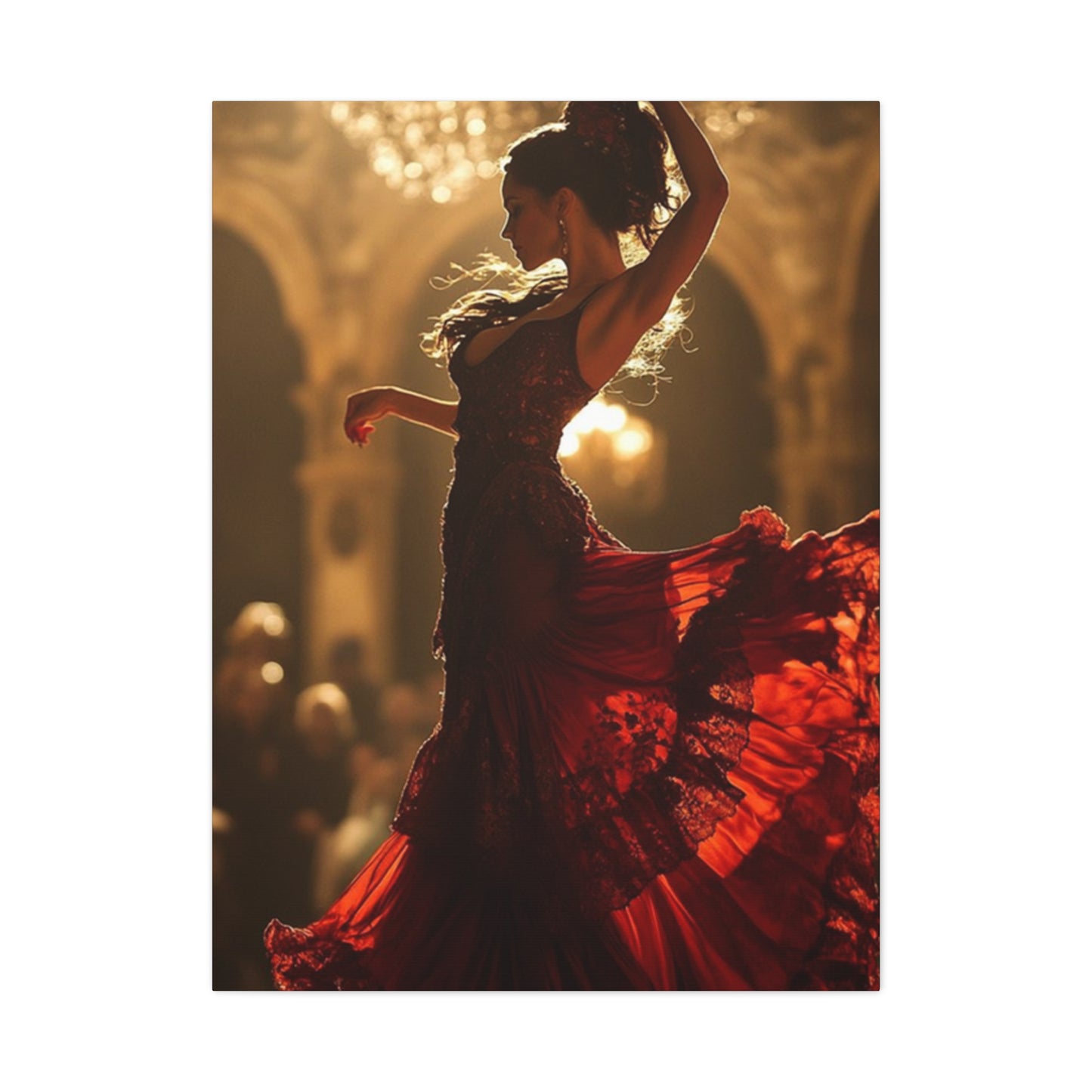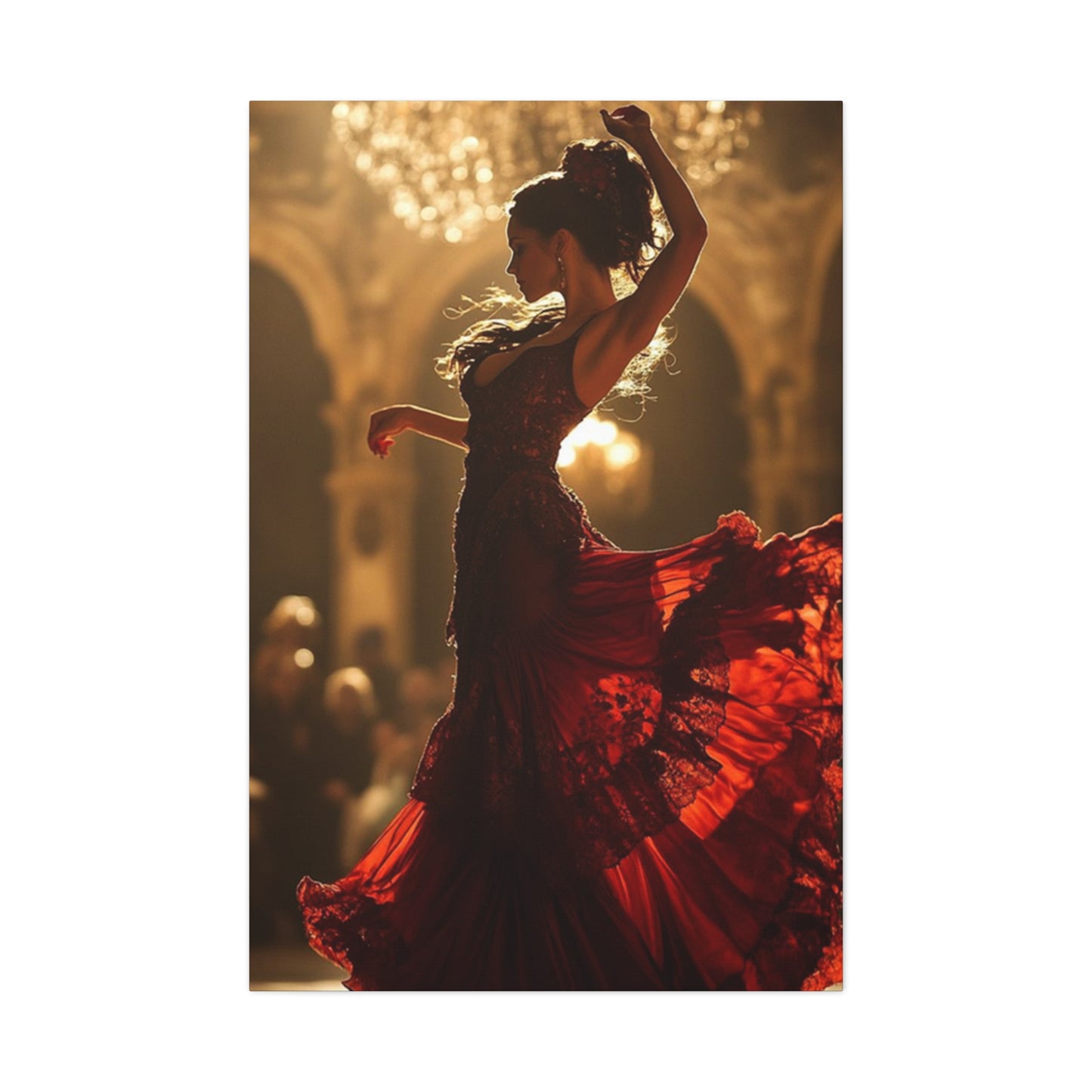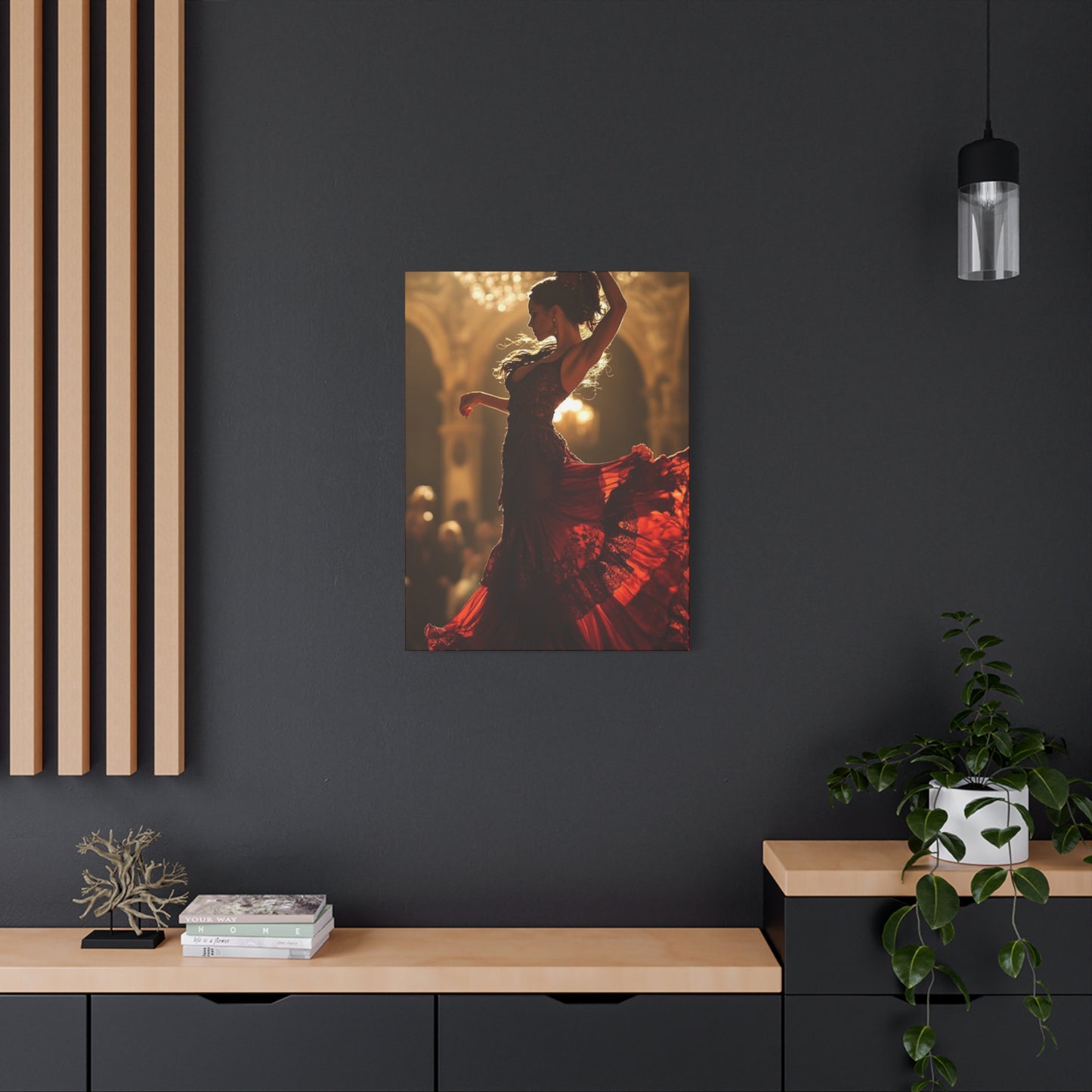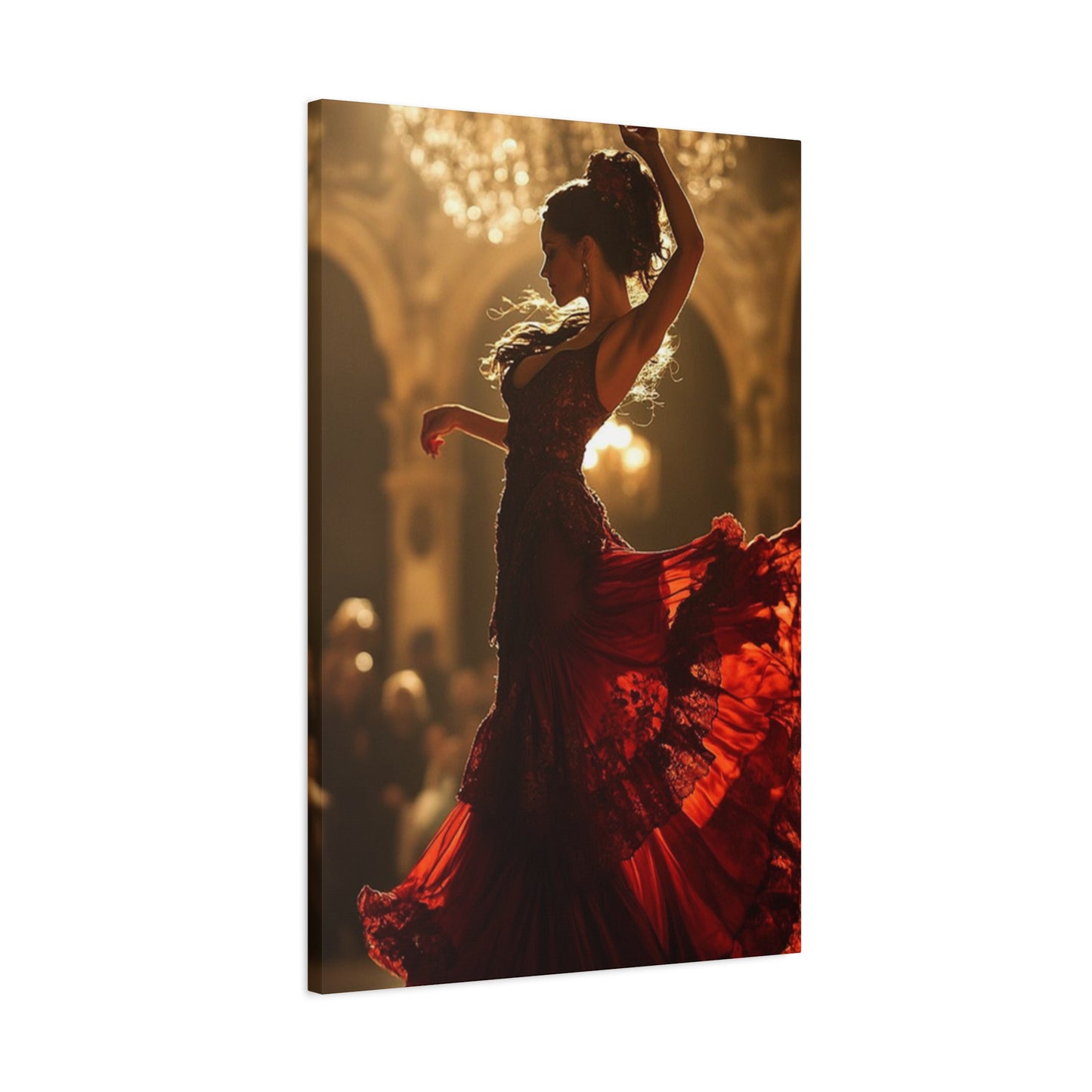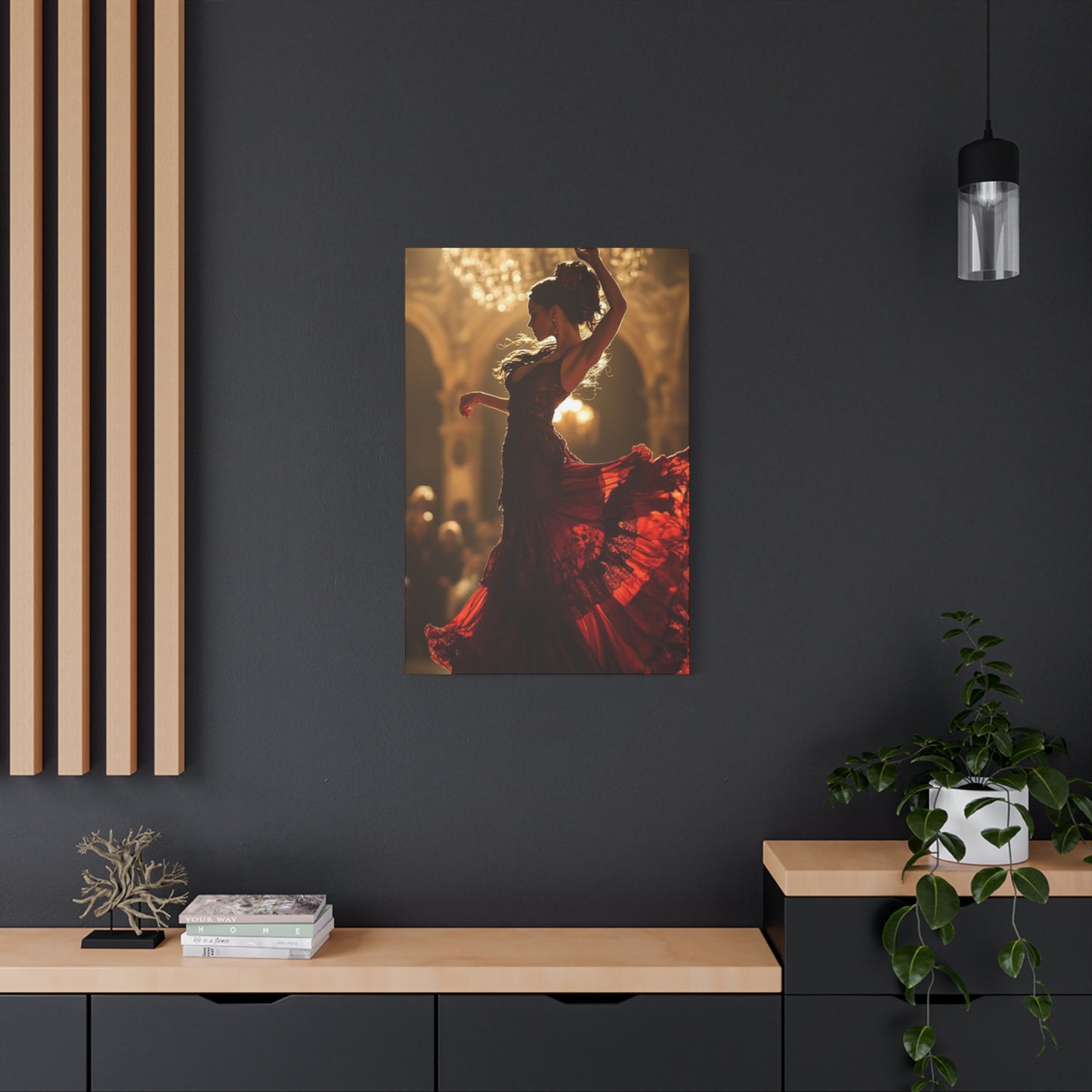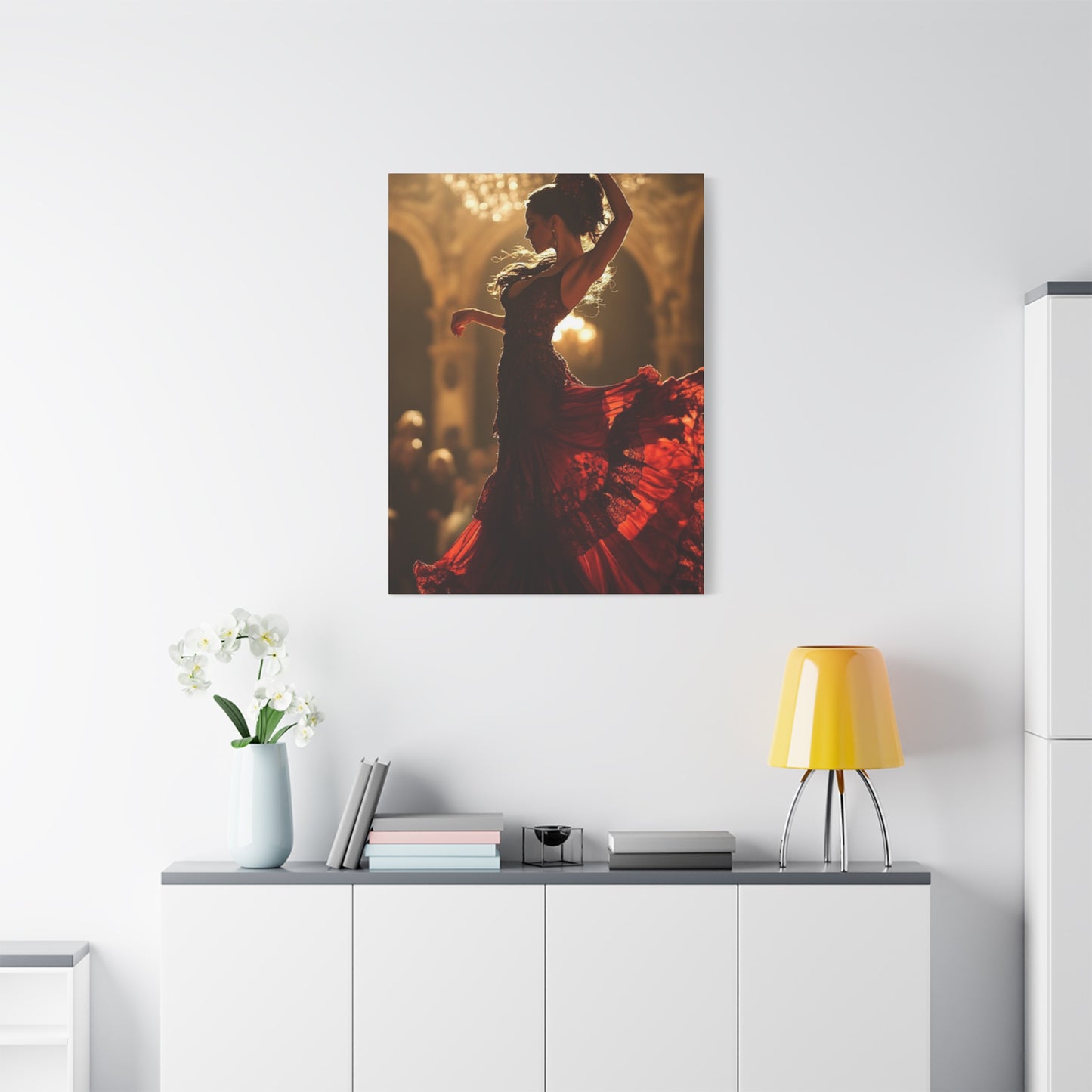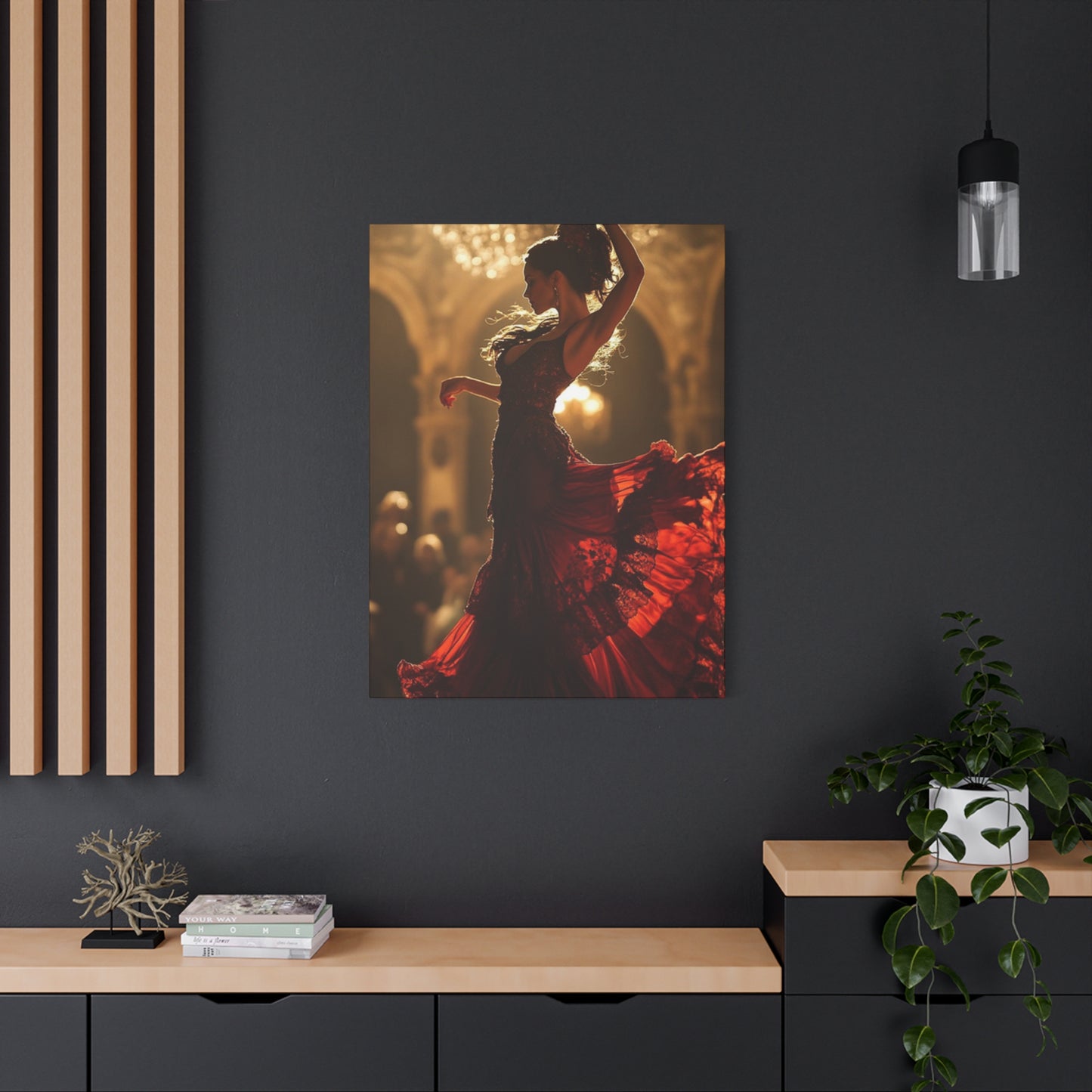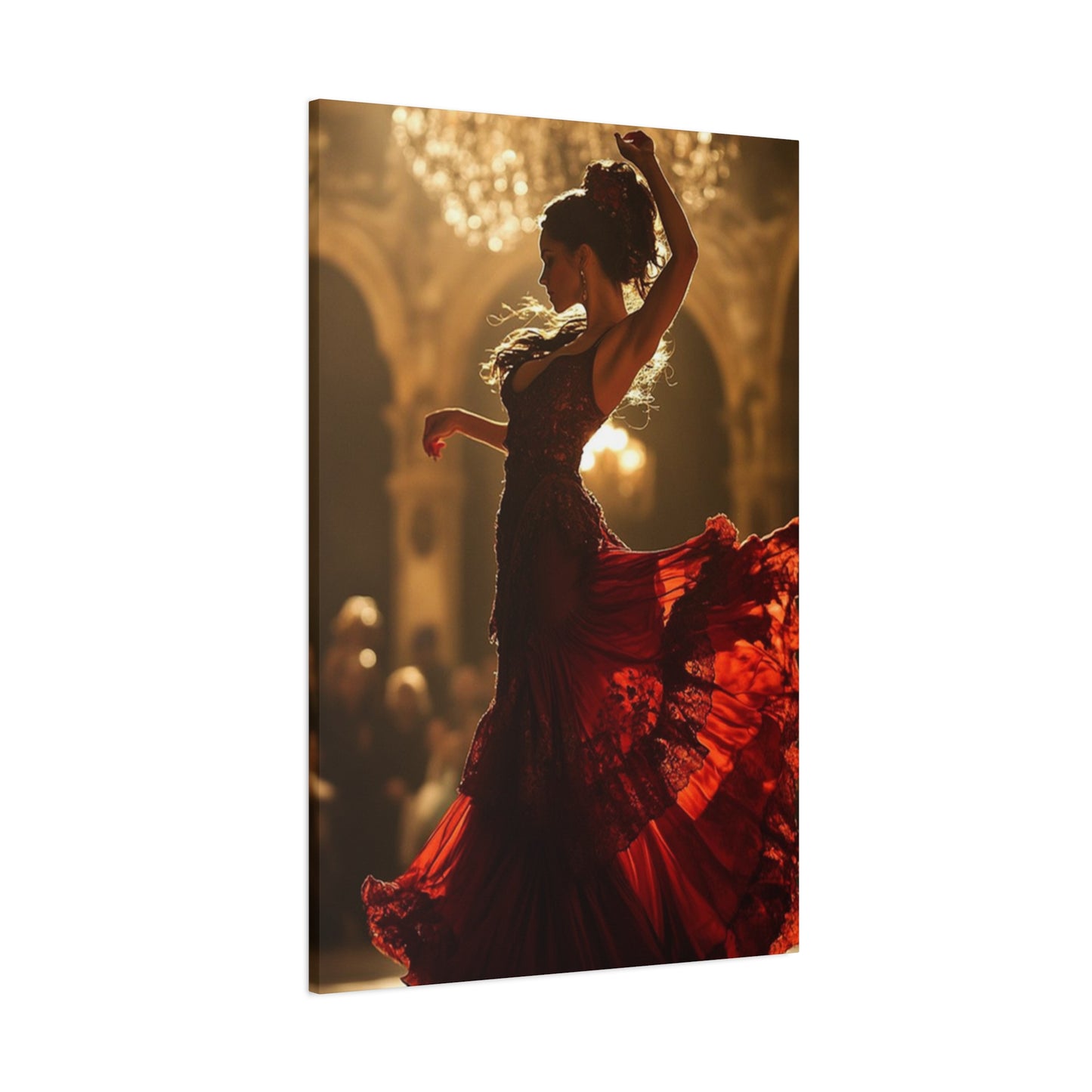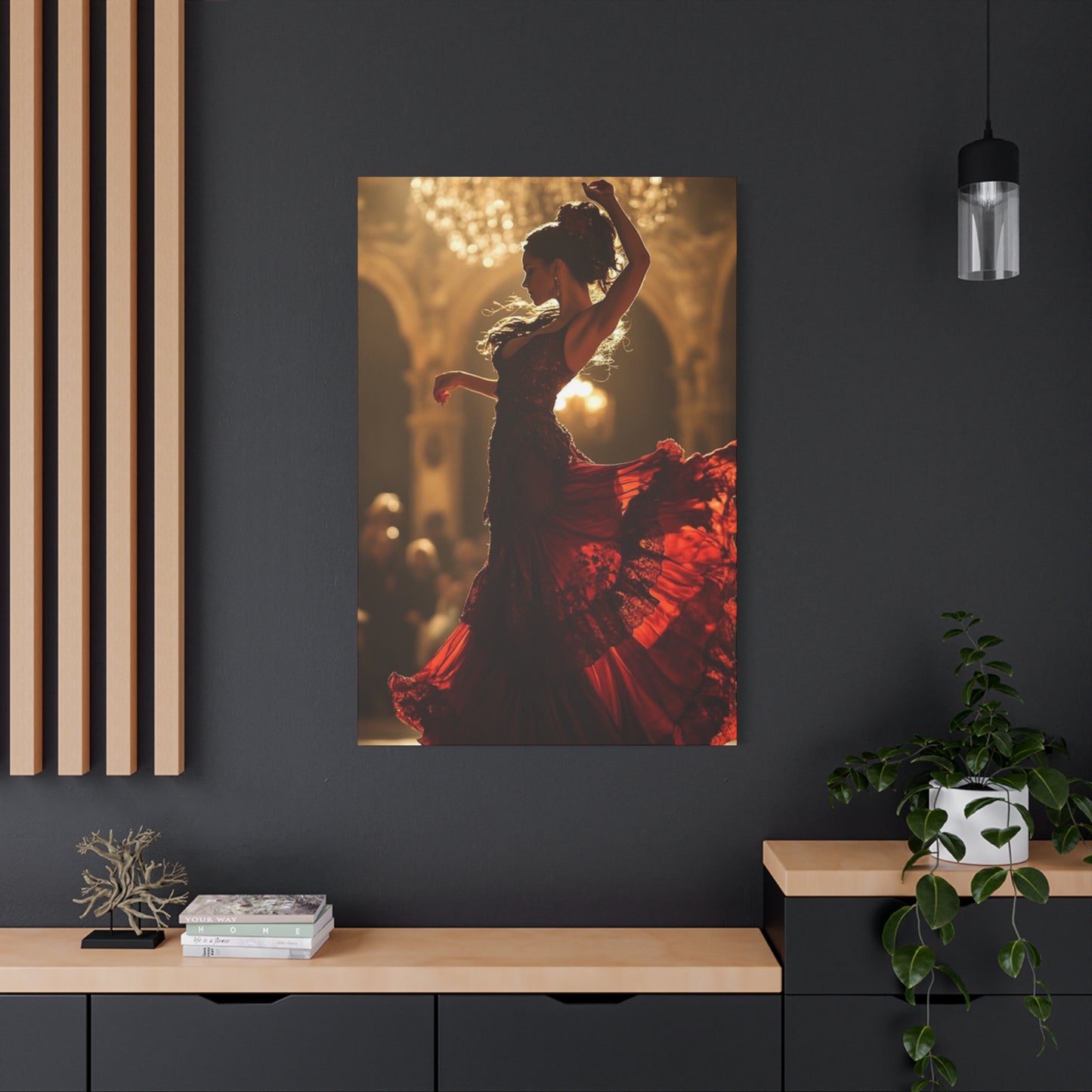Captivating Spanish Dance Photography Wall art: Transform Your Space with Authentic Flamenco
The mesmerizing world of Spanish dance photography captures the passionate essence of Iberian culture through stunning visual representations that have become increasingly popular as wall art and canvas prints. These artistic expressions showcase the dramatic movements, vibrant costumes, and emotional intensity that define traditional Spanish dance forms, particularly flamenco. When transformed into high-quality canvas prints, these photographs become more than mere decorative elements; they serve as windows into a rich cultural heritage that spans centuries of artistic evolution and human expression.
Spanish dance photography wall art represents a unique intersection of documentary artistry and fine art photography, where skilled photographers must capture split-second moments of grace, power, and emotion. The resulting images, when printed on canvas, bring the energy and passion of Spanish dance into homes, offices, and commercial spaces around the world. These pieces have become sought-after items for interior designers, dance enthusiasts, and art collectors who appreciate the combination of cultural authenticity and aesthetic beauty that these works provide.
The appeal of canvas prints featuring traditional Spanish dance photography extends beyond mere visual pleasure. These artworks carry stories of tradition, express universal emotions through movement, and celebrate a cultural practice that has influenced dance forms globally. Whether depicting the fierce intensity of a flamenco bailaora in mid-twirl or the elegant precision of classical Spanish dance, these photographic canvas prints offer viewers an opportunity to connect with Spanish heritage while enhancing their living spaces with sophisticated, culturally rich artwork.
The Rich Heritage of Spanish Dance Through Photographic Lenses
Spanish dance encompasses a diverse range of styles that have evolved over centuries, each with distinct characteristics, regional variations, and cultural significance. Flamenco stands as the most internationally recognized form, originating from Andalusia in southern Spain, where Romani, Moorish, and Spanish cultures converged to create this passionate art form. The dance combines complex footwork, dramatic hand movements, and expressive body language that photographers strive to capture in their work. Beyond flamenco, Spain's dance traditions include jota from Aragon, sardana from Catalonia, and sevillanas from Seville, each offering unique visual elements that translate beautifully into photographic wall art.
The history of Spanish dance photography began in the late nineteenth century when technological advances made it possible to freeze motion on film. Early photographers faced significant challenges capturing dancers in movement due to long exposure times and limited lighting options. As photographic technology evolved throughout the twentieth century, artists gained greater ability to document the dynamic nature of Spanish dance, leading to the creation of iconic images that have become recognized worldwide. These historical photographs not only serve as artistic works but also function as cultural documentation, preserving dance traditions and styles that have evolved or, in some cases, nearly disappeared.
Contemporary Spanish dance photography builds upon this historical foundation while incorporating modern techniques and artistic visions. Today's photographers utilize advanced camera equipment, sophisticated lighting setups, and post-processing software to create images that capture every detail of costume, expression, and movement. The transition from traditional photographic prints to canvas reproductions has opened new possibilities for presenting these images as wall art, with canvas offering texture, durability, and a gallery-quality appearance that enhances the visual impact of the photographs. This evolution has made Spanish dance photography accessible to broader audiences who seek authentic cultural art for their spaces.
The cultural significance of preserving Spanish dance through photography cannot be overstated. These images serve multiple purposes: they educate viewers about Spanish cultural traditions, inspire new generations of dancers and artists, and provide visual documentation of an evolving art form. When displayed as canvas wall art, these photographs become conversation pieces that invite viewers to explore the stories behind the images, the traditions they represent, and the artistic choices made by the photographers who captured them. This educational aspect adds depth to the decorative function, making Spanish dance photography particularly valuable for schools, cultural centers, and homes where appreciation for diverse cultural expressions is valued.
Artistic Elements That Define Spanish Dance Photography
The composition of Spanish dance photography requires careful consideration of multiple visual elements that work together to create compelling images suitable for canvas wall art. Photographers must balance the dancer's movement with the surrounding space, creating images that feel dynamic yet harmonious. The rule of thirds often guides placement of the dancer within the frame, though many photographers deliberately break conventional rules to emphasize the energy and spontaneity of the performance. Negative space plays a crucial role, allowing the viewer's eye to follow the implied motion of the dance while preventing the image from feeling cluttered or chaotic.
Lighting represents perhaps the most critical technical element in capturing Spanish dance photography that translates effectively to canvas prints. Traditional stage lighting used in flamenco performances creates dramatic contrasts between light and shadow, emphasizing the sculptural qualities of the human body in motion. Photographers working to create images for wall art often employ theatrical lighting techniques, using spotlights to highlight key elements like the dancer's face or the swirl of a dress while allowing other areas to fall into shadow. This chiaroscuro effect adds depth and drama to the images, making them visually striking when printed on large-format canvas. Some photographers prefer natural lighting for outdoor shoots, which can create softer, more ethereal images that showcase the costumes and movements in different aesthetic contexts.
Color theory plays an essential role in Spanish dance photography, particularly when capturing the vibrant costumes associated with flamenco and other traditional dances. The iconic red and black combination frequently seen in flamenco attire creates strong visual contrast that photographers can emphasize or soften depending on their artistic vision. Complementary colors in the background or stage setting can either enhance or compete with the costume colors, requiring careful coordination between photographer, dancer, and set designer. When these images are reproduced as canvas prints, color accuracy becomes paramount, as the emotional impact of the photograph depends heavily on the richness and vibrancy of the hues. Professional-grade canvas printing processes ensure that the intense reds, deep blacks, and brilliant whites of traditional Spanish dance costumes remain true to the original photographic capture.
Motion capture techniques distinguish exceptional Spanish dance photography from static portraiture. Photographers employ various shutter speeds to achieve different effects: fast shutter speeds freeze the dancer mid-movement, capturing sharp details of flying fabric, extended limbs, and facial expressions, while slower shutter speeds introduce intentional motion blur that conveys the energy and fluidity of the dance. Some artists create composite images combining multiple exposures to show the progression of movement through time, resulting in abstract representations that emphasize the rhythmic nature of Spanish dance. These technical choices significantly impact how the final canvas print will appear on a wall, with some approaches creating bold, graphic statements and others producing more impressionistic, painterly effects.
Traditional Flamenco Dance Elements in Canvas Photography
Flamenco dance photography captures specific elements that define this passionate art form, with the bailaora or bailaor (female or male dancer) serving as the primary subject. The dancer's posture exhibits a distinctive proud bearing, with chest lifted, shoulders back, and chin slightly raised, expressing the dignity and strength central to flamenco philosophy. Photographers seek to capture this commanding presence, often shooting from slightly below eye level to emphasize the dancer's stature and power. The positioning of arms and hands follows specific conventions in flamenco, with graceful curves and precise finger positions that photographers highlight through careful framing and timing.
The polka-dotted dress, or bata de cola, represents one of the most visually striking elements in flamenco photography. This traditional costume features a fitted bodice and a long, flowing skirt with a train that dancers manipulate as an extension of their body during performance. Photographers capturing images for canvas wall art must consider how the dress's movement creates lines and shapes within the frame, often timing their shots to coincide with moments when the fabric forms particularly dramatic silhouettes. The contrast between the structured fit of the bodice and the wild movement of the skirt creates visual tension that adds interest to the composition. High-quality canvas reproductions preserve the texture details of lace, ruffles, and fabric folds that give these images tactile appeal.
Footwork stands as a fundamental element of flamenco dance, with complex rhythmic patterns created through zapateado, or percussive heel and toe striking. Photographers face the challenge of capturing the explosive energy of flamenco footwork in still images, often focusing on moments when the dancer's foot makes contact with the floor, creating visual impact through the tension in the leg muscles and the dynamic angle of the foot. Some photographers capture close-up shots of feet during zapateado sequences, creating abstract compositions that emphasize the power and precision required for this aspect of flamenco. When printed on canvas, these detailed images showcase the craftsmanship of flamenco shoes and the athletic nature of the dance form.
The emotional expression inherent in flamenco dance provides photographers with opportunities to create images of profound human feeling. Flamenco embodies duende, an untranslatable Spanish concept referring to a heightened state of emotion and authenticity in artistic expression. Photographers attempt to capture duende through images that reveal the dancer's inner experience, focusing on facial expressions, body tension, and the overall energy conveyed through the performance. The intensity of emotion visible in these photographs creates powerful wall art that resonates with viewers even if they have no prior knowledge of flamenco traditions. Canvas prints that successfully capture duende become more than decorative objects; they function as emotional touchstones that can inspire, energize, or move viewers each time they encounter the image.
Regional Variations in Spanish Dance Photography
The jota, a traditional dance from Aragon, offers photographers different visual opportunities compared to flamenco. Characterized by energetic jumping movements, the jota features dancers in regional folk costumes that vary from the flamenco aesthetic. Photography capturing jota dancers often emphasizes the athletic, joyful nature of this dance form, with images showing dancers mid-leap, arms raised, and expressions reflecting the celebratory spirit of the performance. The costumes associated with jota, including embroidered vests, white shirts, and traditional skirts or trousers, provide different color palettes and textures for photographers to work with. Canvas prints of jota photography bring a sense of vitality and folk tradition to spaces, appealing to those who appreciate the diverse regional cultures within Spain.
Sevillanas, the dance most associated with Seville's famous Feria de Abril, presents photographers with images of paired dancers performing synchronized movements. This social dance form, danced during festivals and celebrations, features distinctive arm movements and turns that create beautiful symmetrical compositions. Photographers capturing sevillanas often focus on the connection between dance partners, the coordination of their movements, and the festive atmosphere surrounding the performance. The traditional costumes worn for sevillanas, particularly the colorful flamenco-style dresses worn during the April Fair, provide rich visual material for photography. Canvas wall art featuring sevillanas photography evokes the festive, social aspects of Spanish culture, making these images particularly suitable for social spaces and entertainment areas.
The sardana, Catalonia's traditional circle dance, offers photographers opportunities to capture community and unity through dance. Unlike the individual focus of flamenco photography, sardana images often show groups of people holding hands in circles, performing synchronized steps. The composition of sardana photography typically requires wider framing to capture the circular formation and the collective nature of the dance. Traditional Catalan costumes, including the distinctive barretina cap, add regional character to these images. While less commonly seen as canvas wall art compared to flamenco photography, sardana images appeal to those interested in representations of community, tradition, and regional Spanish identity beyond the Andalusian culture most frequently associated with Spanish dance.
Basque dance photography captures yet another distinct regional tradition, with dances like the aurresku and ezpatadantza featuring male dancers performing athletic movements, sometimes with swords or sticks as props. The traditional white shirts, berets, and dark trousers of Basque dance costume create a different visual palette from the vibrant colors of flamenco or sevillanas. Photographers working with Basque dance subjects often emphasize the strength, precision, and cultural pride evident in these performances. Canvas prints of Basque dance photography appeal to collectors interested in the full spectrum of Spanish regional cultures and those seeking representations of masculine grace and tradition in dance photography.
Costume Details That Enhance Canvas Print Appeal
The traditional flamenco dress serves as a subject worthy of detailed photographic attention, with each element contributing to the overall visual impact. The use of polka dots in various sizes creates graphic patterns that photograph exceptionally well, providing visual interest without overwhelming the image. Ruffles, a signature element of flamenco costume design, create dimensional texture that comes alive in photography, particularly when captured with appropriate lighting that emphasizes the folds and layers. Professional photographers often work closely with costume designers to ensure that the garments worn during photo shoots optimize visual appeal, considering how colors, patterns, and textures will translate into canvas prints intended for wall display.
Flamenco shoes, with their distinctive nails embedded in heels and toes, represent specialized footwear designed specifically for the percussive demands of the dance. Close-up photography of flamenco shoes can create striking abstract compositions that appeal to dance enthusiasts and serve as conversation pieces when displayed as canvas wall art. The wear patterns on well-used flamenco shoes tell stories of countless hours of practice and performance, adding narrative depth to these images. Photographers might capture shoes in action, showing the moment of floor contact, or create still-life compositions that treat the shoes as sculptural objects worthy of artistic contemplation.
Jewelry and accessories worn during flamenco performances add sparkle and detail to dance photography. Large earrings, combs or flowers placed in the hair, and sometimes shawls or mantones add feminine grace to the images. Photographers must balance capturing these decorative elements without allowing them to distract from the overall composition. The reflective quality of jewelry can create catchlights and highlights that add visual interest when captured skillfully. Hair styling in flamenco photography typically features sleek buns adorned with flowers or combs, creating clean lines that complement the dramatic costumes and allow the dancer's facial expressions to remain the focal point of emotional communication.
The manton de Manila, or Manila shawl, represents a particularly photogenic element in Spanish dance photography. These elaborately embroidered silk shawls, typically featuring floral designs and long fringes, can be worn draped over the shoulders or used as props during dance performances. Photographers capture the manton in various states: folded neatly to display embroidery details, draped gracefully over a dancer's shoulders, or mid-flight as it's manipulated during performance. The combination of fine fabric, detailed embroidery, and dynamic movement creates visually complex images that reward close viewing. Canvas prints featuring the manton de Manila appeal to those who appreciate textile arts as well as dance photography, offering cross-cultural appeal since these shawls originated from Chinese silk trade through the Philippines.
Technical Aspects of Capturing Dance Photography for Canvas
Camera equipment selection significantly impacts the quality of Spanish dance photography intended for large-format canvas printing. Professional photographers typically employ full-frame digital cameras with high megapixel counts to ensure adequate resolution for producing canvas prints that can reach several feet in dimension while maintaining sharp detail. The sensor size and resolution capabilities determine how much the image can be enlarged before pixelation or loss of detail becomes apparent. For dance photography, cameras with excellent high-ISO performance prove essential, allowing photographers to use faster shutter speeds in typical stage lighting conditions without introducing excessive noise into the images.
Lens selection depends on the shooting environment and the desired aesthetic effect. Portrait-length telephoto lenses ranging from 85mm to 135mm allow photographers to capture dancers from a comfortable distance while creating flattering perspectives and beautiful background blur that isolates the subject. Wider angle lenses might be employed for environmental portraits that show dancers in the context of their performance spaces or for capturing group formations in regional dances like sardana. The maximum aperture of the lens affects both the camera's light-gathering ability and the depth of field in the resulting images. Many dance photographers prefer lenses with wide maximum apertures such as f/1.4 or f/2.8, which enable faster shutter speeds and create aesthetic background separation that draws attention to the dancer.
Shutter speed decisions directly impact how movement appears in dance photography. To freeze motion completely, photographers typically need shutter speeds of at least 1/500th of a second, and often faster when capturing the rapid footwork of flamenco or the explosive movements of jota. These frozen moments reveal details invisible to the naked eye, such as the precise position of every finger, the exact angle of a turned foot, or the peak moment of a jump when the dancer appears to defy gravity. Alternatively, photographers might intentionally use slower shutter speeds ranging from 1/60th to 1/125th of a second to introduce selective motion blur, creating images with a sense of movement and energy while keeping key elements like the dancer's face or torso relatively sharp.
Post-processing techniques transform raw camera files into polished images ready for canvas reproduction. Professional photographers adjust exposure, contrast, and color balance to optimize the visual impact of their images while maintaining natural skin tones and accurate costume colors. Selective editing allows photographers to enhance certain areas of the image while subtly diminishing others, directing the viewer's attention to key elements of the composition. Sharpening must be carefully calibrated to enhance detail without creating artificial-looking edges or introducing artifacts. When preparing files specifically for canvas printing, photographers often consult with their printing service to ensure proper color space, resolution, and file format specifications are met for optimal results.
Canvas Printing Technologies for Dance Photography
Giclée printing represents the gold standard for reproducing photographic images on canvas, utilizing specialized inkjet printers that employ archival-quality pigment-based inks. This printing method produces canvas reproductions with exceptional color accuracy, smooth tonal gradations, and longevity measured in decades rather than years. The term giclée, derived from the French word meaning "to spray," refers to the microscopic droplets of ink that the printer deposits onto the canvas substrate. Professional giclée printers can accommodate canvases of virtually any size, making it possible to create wall art ranging from modest accent pieces to dramatic floor-to-ceiling installations that transform entire rooms with the presence of Spanish dance imagery.
Canvas substrate selection influences both the appearance and durability of the final print. Artist-grade canvas typically consists of cotton or polyester fibers woven into various textures, from smooth fine-art canvas to more textured varieties that evoke traditional oil painting surfaces. For dance photography, many printers recommend medium-texture canvas that provides subtle tactile interest without obscuring photographic detail. The canvas must be properly primed to accept ink without allowing it to bleed or absorb unevenly. Weight and thickness of the canvas affect how well the material will stretch around stretcher bars without sagging over time, a particularly important consideration for large-format prints that will hang for years.
Ink quality and longevity determine how well a canvas print will maintain its color accuracy and visual appeal over time. Pigment-based inks used in professional giclée printing resist fading from light exposure and environmental factors far better than dye-based alternatives. Manufacturers rate archival inks for expected lifespans under specific conditions, with quality pigment inks on canvas typically lasting seventy-five to one hundred years or more when displayed in interior environments away from direct sunlight. This longevity makes canvas prints of Spanish dance photography suitable investments for serious collectors and commercial installations where artwork must maintain its appearance for extended periods without frequent replacement.
The stretching and finishing process determines how the printed canvas will present on the wall. Gallery-wrap technique involves stretching the canvas around wooden stretcher bars so that the image continues around the edges of the frame, creating a three-dimensional object that requires no additional framing. This presentation method has become increasingly popular for contemporary wall art, including Spanish dance photography, as it creates a clean, modern look that allows the image to stand on its own. Alternative finishing options include traditional framing behind glass, floating frames that create visual separation between the canvas and the frame, or museum-wrap techniques that fold the canvas edges behind the stretcher bars for a clean frontal presentation while making traditional framing possible.
Interior Design Applications for Spanish Dance Wall Art
Living room spaces benefit significantly from the dramatic presence of Spanish dance photography canvas prints, particularly when these works serve as focal points in the room's design scheme. Large-format canvas prints depicting flamenco dancers can anchor a seating area, drawing the eye and establishing a cultural tone for the entire space. The passionate colors often found in flamenco photography complement both traditional and contemporary interior design schemes, working well with warm earth tones, rich jewel colors, or even serving as bold accents in predominantly neutral spaces. Interior designers often recommend hanging statement pieces at eye level, typically with the center of the artwork positioned fifty-seven to sixty inches from the floor, though this can be adjusted based on ceiling height and viewing distance.
Restaurant and hospitality environments frequently incorporate Spanish dance photography as part of their ambiance creation strategy, particularly establishments serving Spanish or Mediterranean cuisine. These images immediately communicate cultural identity to guests, setting expectations for an authentic dining experience. Multiple canvas prints can be arranged in series along a dining room wall, creating a gallery effect that gives guests something to contemplate during their meal. The energetic nature of dance photography adds vitality to these commercial spaces, contributing to a lively atmosphere appropriate for social dining. Restaurant designers must consider lighting conditions when selecting and positioning dance photography, ensuring that the artworks remain visible and impactful under the establishment's ambient and accent lighting.
Home office and study spaces can benefit from the inspirational qualities of Spanish dance photography, with these images providing visual interest that doesn't distract from work tasks while offering occasional opportunities for creative mental breaks. The disciplined nature of dance practice visible in quality dance photography can serve as a subtle reminder of dedication and perseverance, making these images particularly appropriate for work environments. Smaller canvas prints or collections of related images work well in offices, allowing for personal expression without overwhelming the functional aspects of the workspace. Black and white Spanish dance photography offers a sophisticated option for professional office environments where colorful artwork might feel too casual or informal.
Bedroom applications for Spanish dance wall art typically focus on creating sophisticated, romantic atmospheres that complement the room's intimate nature. Softer images showing graceful movements and elegant costumes work better in sleeping spaces than highly energetic photographs that might feel too stimulating for relaxation. Placement above the bed represents a traditional location for significant wall art, though designers sometimes recommend positioning artwork on adjacent walls to be visible from the bed without requiring occupants to crane their necks. The colors in the canvas print can coordinate with bedding, window treatments, or accent furniture to create a cohesive design scheme that feels intentional rather than arbitrary.
Cultural Authenticity in Spanish Dance Photography
Authentic representation of Spanish dance requires photographers to understand the cultural context and traditions they are documenting. Superficial or stereotypical approaches to Spanish dance photography risk reducing rich cultural practices to mere exotic decoration, undermining the dignity and significance of these art forms. Serious dance photographers typically invest time in learning about the history, regional variations, and contemporary evolution of Spanish dance, often collaborating with experienced dancers, choreographers, and cultural consultants to ensure their work respects the traditions being depicted. This commitment to authenticity adds value to the resulting canvas prints, as viewers can sense when an image captures genuine emotion and technique rather than merely presenting stylized poses.
Working with professional dancers rather than models ensures that the movements, expressions, and overall presentation in the photographs reflect actual dance practice. Professional Spanish dancers bring years of training to their performances, resulting in technically correct positions, authentic expressions, and the physical conditioning that makes advanced movements possible. The difference between a trained dancer and a model in costume becomes immediately apparent to knowledgeable viewers, affecting the credibility and artistic merit of the photograph. Many photographers building portfolios of Spanish dance photography for canvas reproduction develop ongoing relationships with dance companies and individual performers, creating collaborative relationships that benefit both the photographer's artistic development and the dancers' promotional needs.
Costume accuracy contributes significantly to the cultural authenticity of Spanish dance photography intended for wall art. Traditional flamenco costumes follow specific conventions regarding cut, fit, and styling that have evolved over generations. While contemporary designers create innovative variations, the fundamental characteristics of authentic flamenco dress remain recognizable to those familiar with the tradition. Photographers must distinguish between genuine traditional costumes, contemporary designs that respect traditional forms, and purely theatrical or commercial interpretations that prioritize visual impact over cultural accuracy. For buyers seeking authentic cultural representation in their canvas wall art, these distinctions matter, influencing both the aesthetic and educational value of the artwork.
The context in which Spanish dance is photographed affects the authenticity of the resulting images. Studio photography offers complete control over lighting, background, and composition, allowing photographers to create technically perfect images that highlight the dance and dancer without environmental distractions. However, location photography at actual performance venues, festivals, or cultural events captures authentic atmosphere and context that studio work cannot replicate. Some photographers pursue hybrid approaches, carefully constructing studio environments that evoke performance spaces while maintaining photographic control. Each approach offers advantages for creating canvas wall art, with studio images providing clean, graphic impact and location photography offering documentary authenticity that connects viewers to real cultural events.
Color Psychology in Spanish Dance Canvas Prints
Red, the color most strongly associated with flamenco and Spanish dance, carries powerful psychological associations that affect how viewers respond to dance photography wall art. This warm color stimulates emotions ranging from passion and love to anger and power, creating immediate emotional engagement with the image. In Spanish dance photography, red appears most commonly in costume elements, particularly in the traditional flamenco dress, where it contrasts dramatically with black accents and white skin tones. Canvas prints dominated by red hues command attention in any space, making them effective focal points but requiring careful consideration of surrounding decor to avoid color clashes. Interior designers working with Spanish dance photography often balance red elements in the artwork with neutral wall colors and furnishings, allowing the canvas print to provide controlled color drama.
Black serves as the complementary counterpoint to red in traditional Spanish dance aesthetics, creating stark contrasts that emphasize form and movement. Black elements in dance photography, including hair, shoes, costume accents, and often the background, provide visual anchors that allow brighter colors to pop forward. The psychological associations of black include sophistication, power, and mystery, qualities that align well with the dramatic nature of flamenco performance. Canvas prints that emphasize black and white with selective color accents create sophisticated, gallery-quality wall art that works in a variety of interior design contexts, from traditional to ultra-modern spaces.
Earth tones frequently appear in Spanish dance photography, particularly in images captured outdoors or in rustic venues that evoke Spain's architectural heritage. Warm browns, ochres, and terracotta hues connect to the landscape of Andalusia and other Spanish regions, creating a sense of place that adds authenticity to the imagery. These colors create warm, welcoming feelings in viewers and work particularly well in homes and commercial spaces seeking to establish Mediterranean or Spanish-inspired design themes. Canvas prints featuring earth tone palettes coordinate easily with natural materials like wood, leather, and stone commonly found in Spanish-influenced interiors.
Jewel tones including emerald green, sapphire blue, and amethyst purple appear in Spanish dance photography through costume choices, lighting effects, and occasionally background elements. These rich, saturated colors add luxury and visual interest to canvas prints while maintaining the emotional intensity associated with Spanish dance imagery. Jewel-tone dance photography works particularly well in formal spaces and in design schemes that incorporate metallic accents like gold or bronze, which complement the richness of the colors. The psychological impact of jewel tones includes associations with prosperity, creativity, and confidence, making these colors effective choices for artwork in professional or entertainment spaces where these qualities enhance the desired atmosphere.
Black and White Spanish Dance Photography
Monochromatic Spanish dance photography removes the distraction of color, focusing viewer attention on form, composition, movement, and expression. This classic approach to dance photography emphasizes the sculptural qualities of the human body in motion, highlighting muscle tension, the flow of fabric, and the interplay of light and shadow without the emotional associations that colors carry. Black and white canvas prints of Spanish dance photography offer timeless sophistication that works across decades of changing design trends, making these pieces valuable long-term investments for collectors and interior designers. The absence of color also allows these artworks to coordinate with virtually any color scheme, providing maximum flexibility in placement and design integration.
The dramatic lighting typical of flamenco performance translates exceptionally well into black and white photography, where contrast between highlights and shadows can be pushed to extremes without appearing unnatural. Photographers creating monochromatic dance images often employ high-contrast processing techniques that emphasize the graphic qualities of the composition, creating bold, striking images that command attention even from a distance. Alternatively, low-key black and white images with predominantly dark tones punctuated by strategic highlights can create moody, atmospheric effects that emphasize the mysterious and emotional aspects of Spanish dance. These tonal choices affect the psychological impact of the canvas print, with high-contrast images creating energy and excitement while low-key images evoke introspection and emotional depth.
Texture becomes more prominent in black and white dance photography, as the eye no longer processes color information and instead focuses on the surface qualities visible in the image. The texture of costume fabrics, the detail in lace and embroidery, the grain of weathered floor boards, and even the pores and subtle imperfections of human skin become more noticeable in monochromatic images. This emphasis on texture adds tactile appeal to black and white canvas prints, inviting closer inspection and rewarding viewers who take time to examine the details. The texture of the canvas substrate itself becomes more apparent in black and white prints, as the slight dimensionality of the canvas weave integrates visually with the textural elements within the photograph.
Black and white Spanish dance photography possesses a documentary quality that connects contemporary images to the historical tradition of dance photography. Early photographers captured Spanish dance exclusively in black and white due to technological limitations, creating an extensive archive of historical images that contemporary monochromatic work references. This connection to photographic history adds gravitas and cultural weight to black and white canvas prints, suggesting that these images document something important and enduring rather than merely capturing a passing moment. For spaces seeking to emphasize the historical and cultural significance of Spanish dance rather than its colorful surface appeal, black and white photography offers an appropriate aesthetic choice.
Framing and Presentation Options for Canvas Dance Photography
Gallery wrap presentation has become the most popular finishing option for Spanish dance photography canvas prints, offering a contemporary, streamlined appearance that requires no additional framing. This technique involves stretching the printed canvas around wooden stretcher bars so that the image continues around all four edges of the frame, creating a three-dimensional object with finished sides. The depth of the stretcher bars typically ranges from three-quarters of an inch for smaller prints to two or even three inches for large statement pieces, with deeper profiles creating more dramatic shadow effects when the canvas hangs on the wall. Gallery wrap presentation works particularly well for Spanish dance photography because it allows the vibrant colors and dynamic compositions to exist without the visual interruption of a frame border, maintaining the immersive quality of the image.
Traditional framing behind glass remains an option for those preferring a more classic presentation or seeking additional protection for their canvas prints. This approach involves placing the canvas in a conventional picture frame with glass or acrylic glazing covering the surface. While this method offers superior protection against dust, fingerprints, and environmental factors, it also introduces reflections that can interfere with viewing under certain lighting conditions and adds weight and cost to the finished piece. Museum-quality acrylic glazing with anti-reflective coatings addresses some of these concerns but represents a significant additional investment. Traditional framing works best for smaller Spanish dance photography prints displayed in high-traffic areas where physical protection justifies the additional expense and potential viewing limitations.
Floating frames create an interesting middle ground between gallery wrap and traditional framing, using a frame that surrounds the canvas with a small gap between the artwork and the frame interior. This presentation style highlights the three-dimensional nature of the canvas while adding the finished, refined appearance that frames provide. Floating frames come in various materials and finishes, from sleek metals that complement contemporary interiors to carved woods appropriate for traditional spaces. The visual separation created by the float gap draws attention to the canvas itself rather than the frame, maintaining focus on the Spanish dance photography while adding a level of sophistication to the presentation. This option works particularly well for series of related prints where consistent framing helps unify the collection.
Custom frame building allows for personalized presentation that can enhance the Spanish cultural themes present in the photography. Frames finished in colors echoing Spanish architecture, such as wrought iron black, terracotta, or whitewashed wood, create contextual connections between the artwork and its presentation. Decorative elements like carved details reminiscent of Moorish patterns or rustic distressing that evokes aged Spanish buildings can further reinforce the cultural themes. However, custom framing requires careful balance to ensure the frame enhances rather than competes with the photograph. The general principle holds that more elaborate, busy, or colorful photographs benefit from simpler frames, while minimalist images can support more decorative framing choices.
Considerations for Dance Photography Wall Art
Small canvas prints ranging from eight by ten inches to sixteen by twenty inches serve as excellent accent pieces that can be incorporated into gallery walls, displayed on shelves and mantels, or arranged in groups to create larger visual compositions. These compact sizes make Spanish dance photography accessible to buyers with limited wall space or smaller budgets while still delivering the quality and presence that canvas printing provides. Multiple small prints arranged in a grid pattern can create significant visual impact while offering flexibility in arrangement and the ability to feature various dancers, movements, or aspects of Spanish dance tradition. These smaller formats work particularly well in intimate spaces like hallways, bathrooms, or small offices where large artwork would overwhelm the room dimensions.
Medium-sized canvas prints, typically ranging from twenty by thirty inches to thirty by forty inches, represent the most versatile size category for residential wall art. These dimensions provide sufficient presence to serve as focal points in most rooms while remaining manageable in terms of weight, shipping, and installation. A medium-sized Spanish dance photography print can anchor a living room seating area, serve as the primary artwork in a bedroom, or create impact in an entryway or dining room. The viewing distance for these sizes should generally fall between six and twelve feet, allowing viewers to appreciate both the overall composition and the finer details of costume, expression, and technique visible in quality dance photography.
Large-format canvas prints measuring forty by sixty inches or larger create dramatic statement pieces that transform spaces with their commanding presence. These substantial artworks work best in rooms with generous wall space and ceiling heights that can accommodate their scale without the artwork feeling cramped or overwhelming. Spanish dance photography, with its inherently dramatic subject matter and strong compositional elements, scales up particularly well, maintaining visual impact even when viewed from significant distances. Large canvas prints require careful consideration of the viewing environment, including the primary viewing distance, room lighting, and the scale of surrounding furnishings. Professional installation becomes increasingly important as size increases, ensuring that the canvas hangs securely and at the optimal height and position for the space.
Panoramic and custom dimensions offer alternatives to standard rectangular formats, allowing buyers to optimize their wall art for specific spaces or artistic visions. Horizontal panoramas work well for displaying multiple dancers or showing the sweep of a dress in motion, while vertical formats emphasize the full-length elegance of a dancer's form or the dramatic lines created by raised arms and extended legs. Custom sizing allows perfect fitting for challenging wall spaces like the area above a sofa, between windows, or in narrow hallways. Many professional canvas printing services offer custom sizing at minimal or no additional cost compared to standard dimensions, making this an accessible option for those seeking perfectly proportioned artwork for their specific spaces.
Photography Styles in Spanish Dance Canvas Art
Documentary-style Spanish dance photography prioritizes authentic capture of real performances, rehearsals, or cultural events over controlled studio aesthetics. These images carry the energy and unpredictability of live dance, including environmental elements like performance venues, audiences, and the technical apparatus of professional dance production. Documentary dance photographs often employ available light rather than controlled studio lighting, resulting in images that may be grittier or less technically perfect than studio work but that compensate through authenticity and emotional immediacy. Canvas prints of documentary dance photography appeal to those seeking genuine cultural documentation rather than idealized artistic interpretations, making them particularly suitable for educational institutions, cultural centers, and collectors interested in photojournalistic approaches to art.
Fine art photography approaches Spanish dance as a subject for creative interpretation rather than straightforward documentation. Fine art dance photographers might employ elaborate lighting schemes, unusual angles, post-processing techniques, or conceptual approaches that transform the dance into vehicles for broader artistic statements. These images may emphasize abstraction, focus on isolated body parts or costume elements, or combine multiple exposures to create surreal effects that exist purely in the realm of visual art rather than documenting actual performances. Canvas prints of fine art dance photography serve collectors seeking artwork that happens to feature Spanish dance rather than buyers primarily interested in the cultural aspects.
Conclusion
In conclusion, captivating Spanish dance photography wall art offers a unique and powerful way to transform any space by infusing it with the passion, energy, and cultural richness of authentic flamenco. This art form goes beyond mere decoration; it captures the intensity and grace of the dance, freezing moments of expressive movement and emotion that speak to the soul. For those seeking to bring life, color, and a deep sense of heritage into their interiors, flamenco photography provides a stunning focal point that resonates with both tradition and artistic beauty.
One of the most compelling reasons to choose Spanish dance photography as wall art is its ability to convey raw emotion and storytelling through visual imagery. Flamenco, with its intricate footwork, dramatic gestures, and soulful expression, embodies a rich cultural narrative of struggle, joy, and passion. Photographs that capture these elements create a powerful connection to Spain’s vibrant artistic heritage, making each piece not just a picture but a window into a world of rhythm and fire. This emotional depth is what distinguishes flamenco photography from other types of art, offering viewers an immersive experience that transcends the physical space.
Moreover, Spanish dance photography is incredibly versatile when it comes to interior design. Whether your style is modern, rustic, eclectic, or traditional, these images can seamlessly complement and elevate your décor. The bold reds, deep blacks, and rich earth tones typical of flamenco photography add warmth and drama to any room, while the dynamic compositions bring movement and energy that enliven the space. This versatility allows homeowners and designers to use flamenco wall art as a statement piece or as part of a curated gallery, adding layers of cultural significance and visual interest.
Technological advances in photography and printing have also enhanced the quality and accessibility of flamenco wall art. High-resolution images printed on premium materials, such as canvas or fine art paper, ensure that every detail—the flick of a fan, the swirl of a dress, the intensity in a dancer’s eyes—is vividly captured. These details are crucial to conveying the authenticity and spirit of flamenco, making the artwork not just beautiful but meaningful.
Beyond aesthetics, flamenco photography wall art also serves as a source of inspiration. It celebrates the resilience, passion, and creativity that define the dance, reminding viewers of the power of self-expression and cultural identity. Incorporating such art into living spaces or work environments can foster a deeper appreciation for artistic traditions while encouraging personal connection to movement and emotion.
In essence, captivating Spanish dance photography wall art does more than decorate a wall—it transforms a space by bringing the fiery spirit of flamenco indoors. It offers a celebration of culture, emotion, and artistry that resonates with both aficionados of the dance and those new to its magic. As more people seek art that tells stories and evokes powerful feelings, flamenco photography remains a timeless and captivating choice.



















